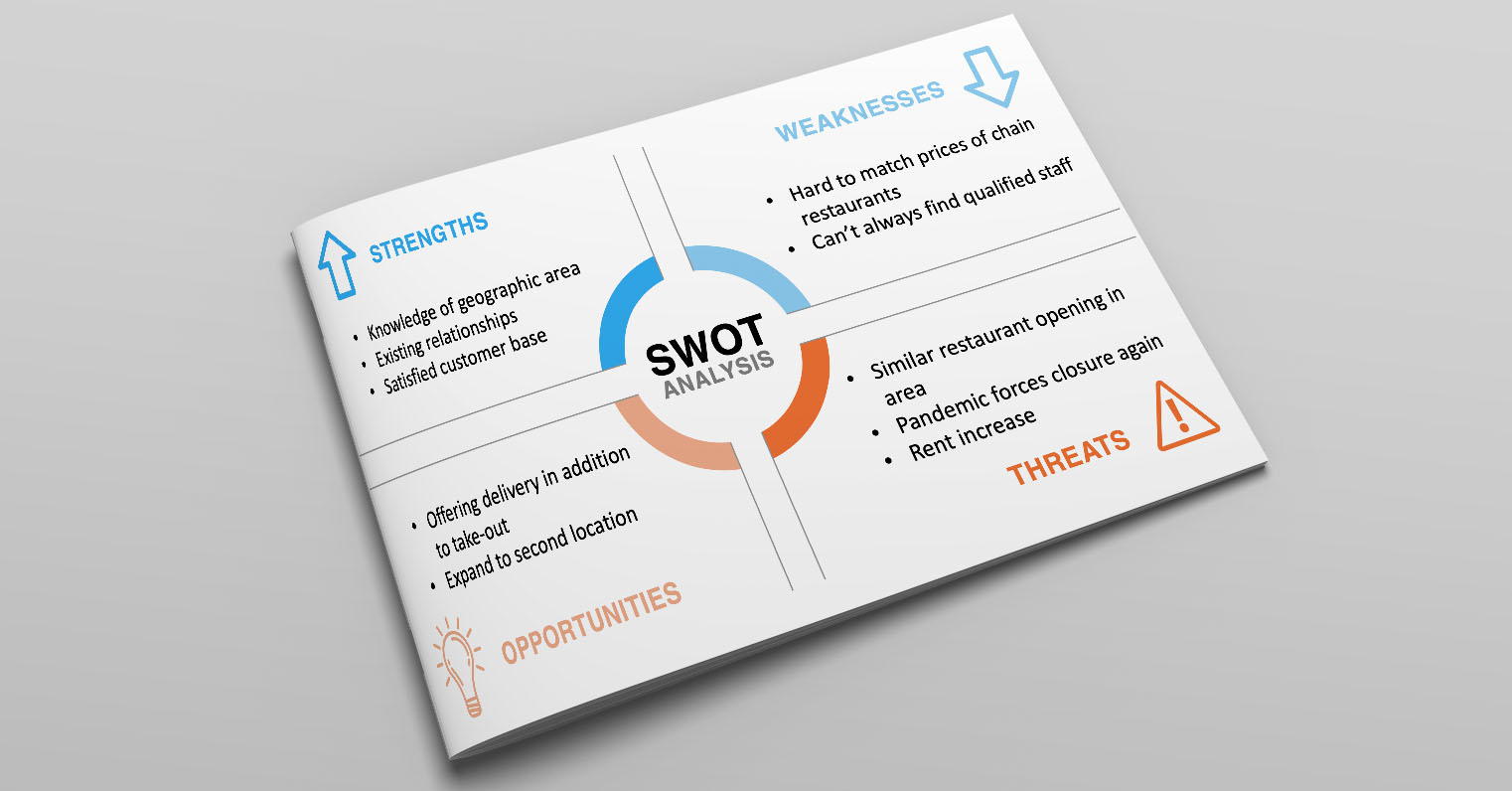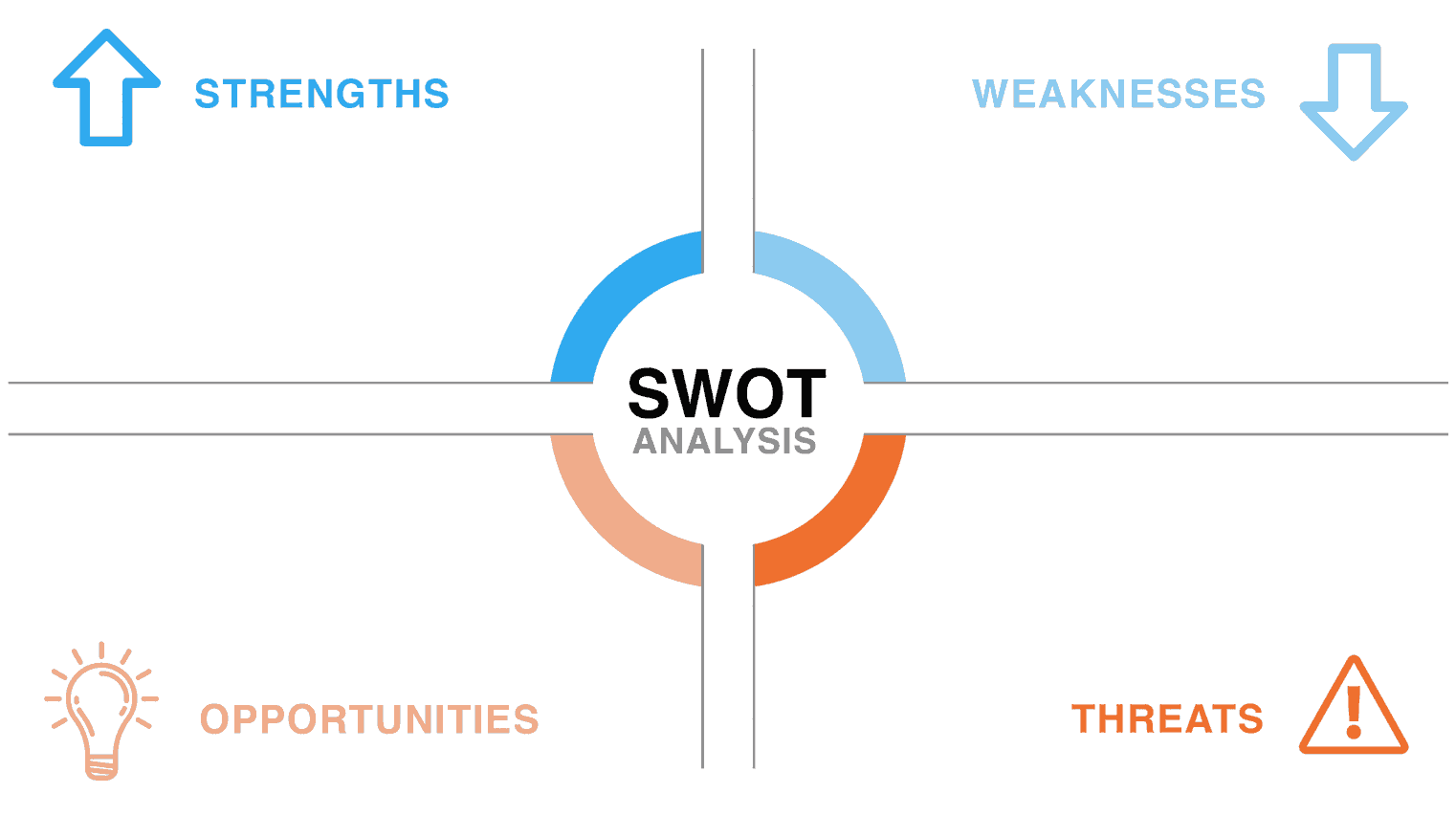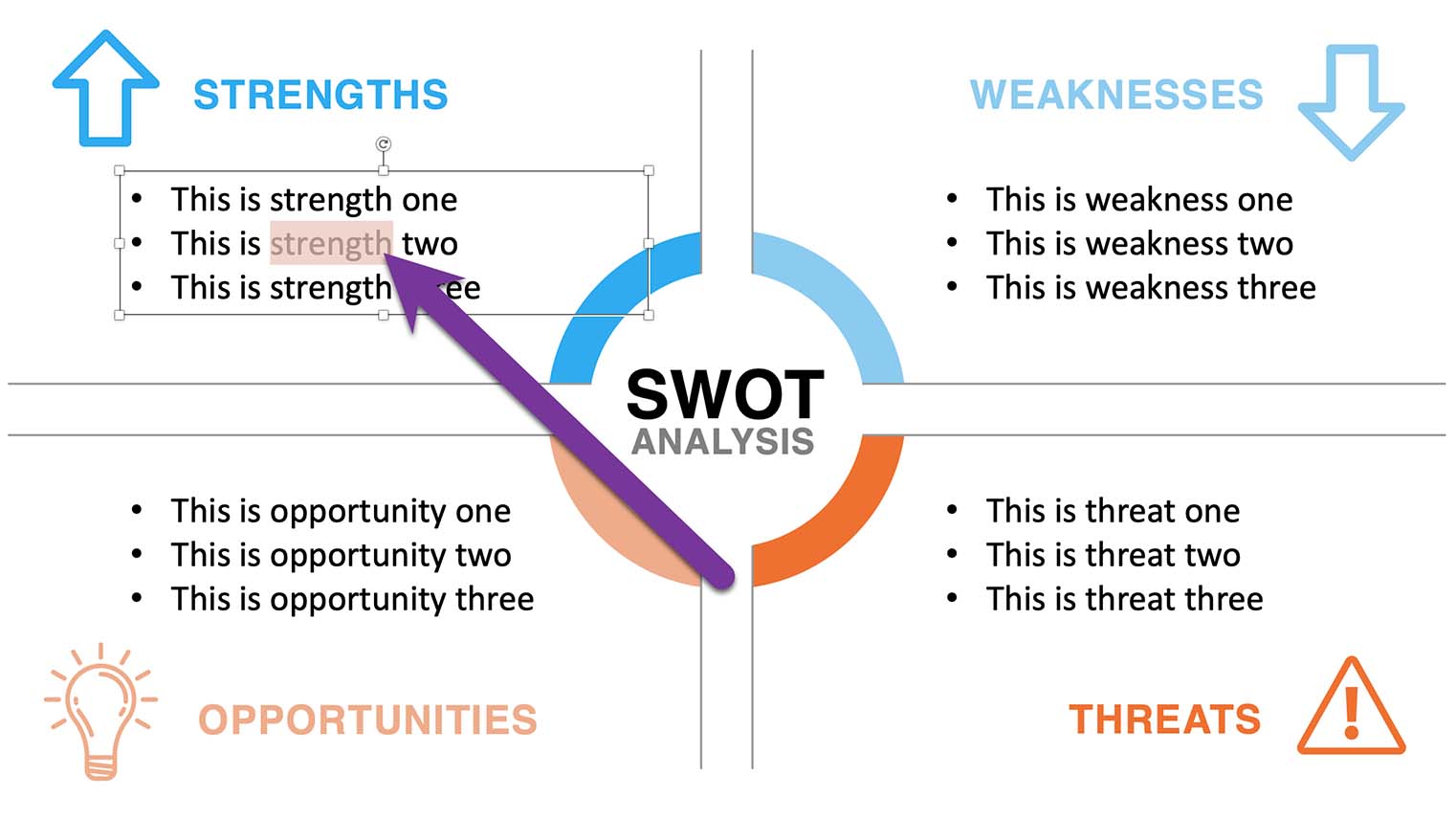Strength, Weakness, Opportunity, and Threat (SWOT) Analysis

A SWOT analysis is a framework for understanding your enterprise and how you compete in the market. Performing this type of methodical assessment can be a helpful step in developing a strong business strategy.
If you just want a SWOT analysis template, send yourself this SWOT PowerPoint and edit the text. Otherwise, keep reading for a complete overview of SWOT.
What is a SWOT Analysis?
SWOT is an acronym for strengths, weaknesses, opportunities, and threats. By analyzing your company from these four perspectives, you can better understand the internal and external factors that affect your performance, goals, and outcomes. A SWOT analysis can be performed for a team, a department, or an entire company.
Why Do A SWOT Analysis?
A SWOT analysis is more than just a thorough exercise. It’s the process of taking a fact-based, data-driven approach to understanding your company. Most of us have preconceived notions about what works well and what doesn’t at our organization. But when you set aside the time to examine your strengths and weaknesses as a group, you’ll discover new insights and information.
The benefits of completing a SWOT analysis include:
- Collaborative process: The process allows multiple stakeholders to share insights and ask questions, which can help everyone uncover their blind spots.
- Flexibility: You can use both qualitative and quantitative information, and can perform the analysis as a one-off exercise or as part of a longer strategic process.
- Simplicity: You don’t need any special skills to lead a SWOT analysis, nor do you need to hire an outside facilitator.
A SWOT analysis can be performed in any industry, at for-profit or non-profit entities, and at organizations of any scale.
How to Do a SWOT Analysis
You shouldn’t conduct a SWOT analysis on your own. Instead, gather all the employees, board members, or stakeholders needed to offer a variety of observations. Make sure you set aside enough time so that all parties can give thoughtful input. The basic steps of this analysis are outlined below:
- Create a visual map – this can simply be on a whiteboard or poster paper. Draw a quadrant so you can write your strengths, weaknesses, opportunities, and threats in each respective square:

-
Begin brainstorming – you can start with individual reflection or group discussion, whichever works best for your team. As you move through your analysis, these questions may help guide you:
Strengths
What is working well at your organization?
What unique resources set you apart from competitors?
Weakness
Where are you lacking resources?
Where are you underperforming?
Opportunities
Are there new markets you can explore?
Are there new tools or technologies you can implement?
Threats
Are there industry trends or new regulations that could negatively impact your business?
What are your competitors doing that you aren’t? -
Once you’ve discussed your ideas and made notes in all the quadrants, it may be helpful to rank them. Group members can vote on which SWOT analysis strengths, weaknesses, opportunities, and threats they think are most important.
The process may not go as you expected, and that’s okay. The power of a SWOT analysis is that you’re likely to come away with new insights about your organization that you may not have realized on your own.
SWOT Analysis Template
If you want to share your SWOT analysis in PowerPoint, we’ve got a template to get you started. Just send yourself this SWOT PowerPoint and edit the text.

SWOT Analysis Example: Restaurant Industry
Imagine a family-owned restaurant that’s been in business for several decades. Their strengths might be their existing relationships, knowledge of the geographic area they serve, and their base of satisfied customers. Their weakness may be their size: they are unlikely to be able to compete with chain restaurants that have access to scaled-up resources. An opportunity could be an untapped market – perhaps they haven’t started a delivery or takeout service yet. Finally, a potential threat could be another restaurant with similar menu offerings or clientele.
Using A SWOT Analysis
A SWOT analysis can be a great way to break out of your regular work patterns and assess your organization from a fresh perspective. You can conduct a SWOT analysis in the following ways:
- As part of a broader strategic planning process
- When preparing to launch a new product or initiative
- During a merger or acquisition process
Next Steps in Strategy Management
If you’re looking for ways to help guide and inform your business strategy, consider performing a SWOT analysis with your key stakeholders. Gaining a better understanding of where you’re excelling and where you can improve can help guide the development of your organization’s operational plan. Once you know where your weaknesses are, you can implement steps to address them. That’s where Spider Strategies comes in – our Spider Impact platform provides powerful data visualization and analysis to simplify strategy execution and management. See how Spider Impact helps you define, measure, manage and report on operational plans. Click for a free trial or demo.
Demo then Free Trial
Schedule a personalized tour of Spider Impact, then start your free 30-day trial with your data.






